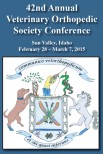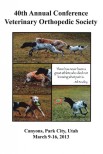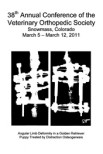A 10-month-old Poodle was presented with intermittent non-weight-bearing lameness of the left thoracic limb. Orthopedic and radiographic examinations revealed medial shoulder luxation and markedly reduced elbow extension.
A two-stage surgical approach was performed. In the first stage, selective myotomy of periarticular structures, including the biceps brachii–brachialis complex and the extensor carpi radialis muscle, was conducted via medial and lateral approaches. A trans-articular external skeletal fixator was applied to maintain elbow extension. Elbow extension improved from 105° preoperatively to 142°.
After confirming functional recovery of the elbow joint, the second stage involved shoulder arthrodesis using a circular osteotomy technique with a radial saw, which enabled fine-tuned intraoperative adjustment of limb alignment based on the contralateral limb posture.
At nine months postoperatively, the patient exhibited a symmetrical gait, full weight-bearing, and no evidence of discomfort on range of motion assessment. This case highlights the clinical relevance of secondary elbow contracture associated with congenital shoulder instability and suggests that a combination of targeted muscle release and adjustable arthrodesis may offer favorable outcomes in managing complex joint dysfunction.









